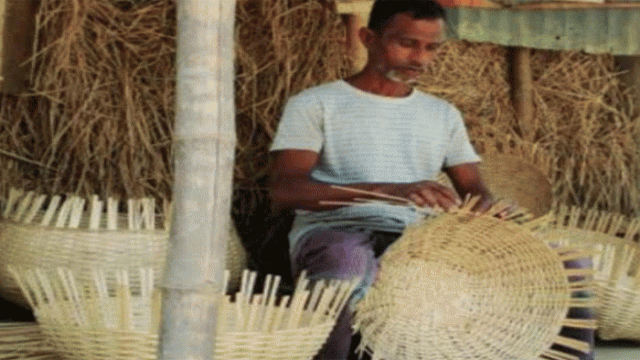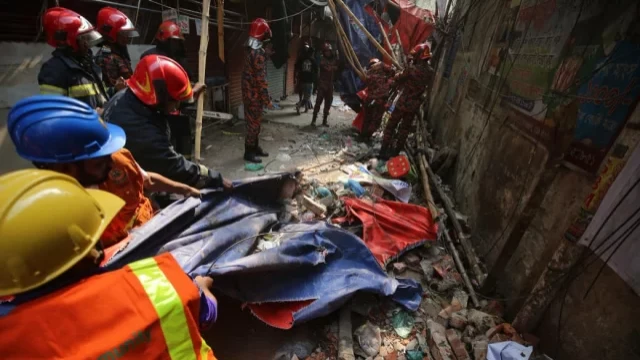Rajshahi, July 19 (V7N) – Bamboo and cane crafts once formed a major part of Bengali rural culture and played a central role in traditional Bengali New Year celebrations. In villages across rural Bengal, houses were often surrounded by bamboo groves, and the crafting of bamboo and cane items was a time-honored tradition. For countless poor rural families, this cottage industry provided their primary source of livelihood. Today, however, that heritage is slipping away—supplanted by cheaper, mass-produced plastic goods—and many artisans are unable to sustain their traditional craft.
From dawn till dusk, men and women in villages used to weave a variety of practical items—mats (chatai), baskets (kula, dala), screens (paloi), carrying tools (dutali), grain sieves (chalni), stoves (changari), trays (khaloi), big baskets (jhuri), cradles (khachi), fish traps (jolonga), and more—using bamboo and cane. These items were sold in local markets or delivered door-to-door by itinerant traders. As bamboo prices rose, however, the cost of crafting these products increased sharply, cutting into artisans’ earnings and forcing many to abandon the trade for other, more profitable work.
Today, in most rural bazaars, bamboo and cane products have almost disappeared. Craftspeople face deep economic hardship as demand declines and government assistance remains absent. Without proper planting, care, or policy support, even local bamboo groves are disappearing, accelerating the decline of bamboo-dependent livelihoods in the region.
Local vendors recall a time when broad selections of handmade goods—such as kula baskets, dalas, toporis (woven hats), fish traps, straw brooms, woven fans, and even bamboo poles for constructing homes—were sold daily in village markets. Now, those products have nearly vanished, and bamboo groves once prevalent in rural areas have become rare.
Artisan Abdul Alim (55) said, “Previously, we made bamboo items at home and sold them profitably in the market. Now we struggle. We work day and night, but sales have dropped sharply, and so has profit. We receive no official support, and life is full of hardship. Many have abandoned this craft for other work.”
Another artisan, Shobuj Dewan (45), shared, “I’ve given up this profession and now drive an auto-rickshaw to survive. Apart from two or three families in our community, everyone else switched professions. There used to be plenty of bamboo groves in our villages, and the demand for bamboo crafts was high. Now the groves have disappeared. The cottage industry has been forced to diminish, and so have the livelihoods of countless families.”
Without intervention—such as reviving bamboo cultivation, offering training, marketing assistance, or establishing craft cooperatives—this traditional craft risks becoming nothing more than a museum exhibit. The loss represents not just cultural erosion, but a major blow to rural economies and vulnerable artisans.
END/MRA/SMA/































Comment: